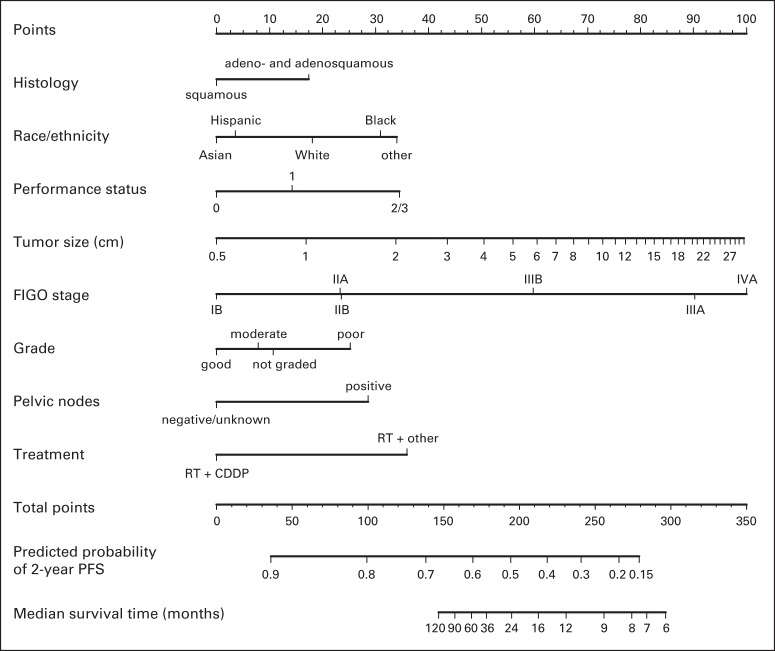Fig 1.
Nomogram for predicting 2-year progression-free survival (PFS). To use, find patient's histology on histology axis, then draw straight line upward to points axis to determine how many points toward progression patient receives for histology. Do this again for other axes, each time drawing straight line upward toward points axis. Sum points received for each predictor, and find sum on total points axis. Draw straight line down to survival-probability axis to find patient's probability of no progression of cervical cancer at 2 years. For cohort of women exactly like patient, we would expect between (predicted probability [PP] − 0.10) × 100% and (PP + 0.10) × 100% of them to remain free of disease after 2 years. For example, patient receives following number of points for each specific characteristic: histology, adenocarcinoma/adenosquamous carcinoma (17 points); race, white (18 points); performance status, 2 to 3 (35 points); tumor size, 6 cm (60 points); International Federation of Gynecology and Obstetrics (FIGO) stage, IIA (23 points); grade, poor (25 points); pelvic nodes, negative (0 points); and treatment: radiotherapy (RT) plus cisplatin (CDDP; 0 points). Points total is 17 + 18 + 35 + 60 + 23 + 25 + 0 + 0 = 178, and straight line drawn down from total points axis at 178 crosses PP axis at approximately 0.55. Therefore, patient's PP of 2-year PFS is within 0.55 ± 0.10 = 0.55 (95% confidence limits, 0.45 to 0.65).

